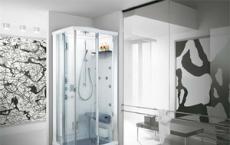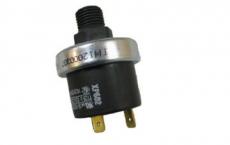The minimum slope of the sewage system. The minimum slope of the sewage system is the norm
How to choose the necessary bias - when laying a sewer pipe to ensure natural runoff
When designing and further installing the installation of an individual sewer system for domestic needs in private housing construction, you definitely need to know what kind of bias it is necessary to ensure in order to obtain a natural sewage drain. After all, basically, the peculiarity of the functioning of the system of domestic sewerage is concluded in gravity, in other words - such a movement to domestic sewage, provides inertia of their own gravity. Therefore, it is completely unacceptable to make mistakes in calculating the optimal slope of the sewer pipes of the system. How to ensure this condition?
Feature of the arrangement
In individual housing construction, a possible arrangement, as a variant of forced sewerage in most cases, is not applied, except if it is not possible to install the sewage system, ensuring the gravity of domestic sewage. Here, when implementing a project of a sewerage system with a natural, gravity drain, all the features that contribute to a more accurate determination of the angle of slope of the pipes and their laying should be taken into account. Errors in the calculations, inevitably lead to disruptions in the operation of the sewage system, and even, in fact, in the impossibility of its operation.
The domestic sewage system is engineering communications with a network of pipes through which domestic waste from the plumbing of a residential building must enter the sewage treatment plant, and this is facilitated by the correctly executed angle of inclination of this pipeline over its entire length. Usually the angles are denoted in degrees, but when constructing different pipelines, a completely different calculation algorithm is used. AT project documentation systems of pipelines, the angle of inclination of laying sewer pipes is calculated in centimeters of the diameter of the pipes, by their length in meters.
The slope of the sewage system affects the operation of the system
Here, as is known, the liquid can not be lifted up, without the help of special pumping equipment, and to ensure that the drains advance by gravity through the sewage pipes, the sewage network system must be laid with a certain slope. And probably many people think that the more this angle of incline, the more will be the productivity of the entire sewage system. But this is a delusion, and not everything is as simple as it may seem.
After all, the sewage that the sewer carries is not a pure liquid, but with various elements of biological, and not only, wastes that are formed in the process of human life. In the sewage drainage residues of fat along with the water that was washed dishes, and various detergents, including washing. All these substances have the property of depositing on the inner surface of the pipeline. And if the flow velocity of the effluent is small, these deposits eventually overlap, as a result of which partial damage can occur, and after a longer time, during its operation, a complete blockage of the sewerage is possible.
To exclude such a phenomenon, which will require serious repairs, it is necessary to make a qualified calculation of the slope of the pipeline in advance, which will ensure the optimum flow of sewage. The parameter of the parameter of this speed has in most cases a value of 0, 7 - 1 m / s. For such calculations, there are corresponding tables, which take into account all possible difficulties in the technological features of the arrangement of domestic sewage systems in private housing construction.
Too large or insufficient slope of the pipeline
If there is insufficient inclination of the angle when laying the pipes, the flow velocity will be insufficient to entrain the flow of the washing liquid from the solid elements; there will not be enough head pressure to carry off impurities, and a sewage blockage may soon form. If you make too steep a slope of the sewage pipeline, this can also affect the efficiency of its operation; The high transience of the washing liquid will be excessive, and will not have time to carry away the solid elements of impurities. And even with a large slope of pipes in the sewage system, can lead to a breakdown of water closures, which in turn can cause a specific smell of sewage in the house.
It should be recalled that the value of the slope of the sewer pipes during calculations and their laying is determined in centimeters. In addition, directories on the calculation of sewer laying can contain such values in the form of fractions. Here the value of the fraction expresses the amount of reduction in the level of the sewage pipe to the total length of the sewage system.
For greater clarity of this system of calculations, let's look at a concrete example of figures:
Provided that the required bias is ensured, the project proposes that this slope should be 0.04, which means that on the line meter of the pipeline, the value of the inclination angle difference should be 40 mm; if the length of such a pipeline is 5 meters in length, then its lower mark, should be 20cm (4 × 5) below the top.
Y = H / D
The following values are expressed here;
Y - level of pipe fullness.
H is an indicator of the height of the liquid level in the pipe.
D is the diameter of the pipe.
To determine the slope of the sewer pipe, so that the sewerage work is satisfactory, the calculation is first made of the degree of filling of the pipe using the formula:
- If the value of Y is 0, the pipe, then, will be completely empty;
- If the Y value reaches 1, then the pipe volume will be completely filled;
For satisfactory operation of the system, a determination is made of the optimum value of the filling of pipe K, which should be 0.5 - for pipes with smooth inner walls ( plastic pipes), and 0,6 - for pipes that have roughness on the walls. These are the most acceptable values, which will ensure unhindered passage of effluents, and hence in a satisfactory sewage capacity.
Determination of the slope angle of the sewage pipeline
Here everything is clear - the value of the minimum slope of the sewage system pipe will depend indirectly on its diameter. The standards for the arrangement of sewage systems provide the following values for the slope of the pipe:
- For sewer pipes with a diameter of 50 mm, the optimum slope will be 0.03.
- For sewer pipes with a diameter of 85 to 100mm, this will be 0.02.
- For certain sanitary equipment there are also their own standards for equipping their branches. So, to ensure removal from the washbasin, it is recommended to use pipes with a diameter of 40-50 mm, with a minimum gradient of 0.025, and recommended - 0.035.
- The outlet from the toilet should be made with a pipe with a diameter of 100 mm. And the recommended slope should be within the limits, respectively, -0.012 and 0.02.
Slope necessary for outfitting on the outside
It is important to correctly calculate the angle of laying the pipe when installing the external network. Sewer pipes of a larger diameter are used here. If 1500 mm pipes are used for installation, the calculated slope will be 0.008, and if it is not possible to provide this value, this indicator can be reduced to 0.007.
If you plan to use pipes of 200 mm, the recommended and allowable slope will be within 0.007 and 0.005. In addition, there are limitations on the maximum slope, and in outdoor sewage systems this value will be equal to 0.15. In other words; if the slope of the pipe is not ensured when installing the external sewage system more than 15 cm per running meter of the length of the pipeline, the entire system can not function effectively, and this will be associated with frequent clogging.
Sewerage in your own home is a necessary engineering system that increases the comfort for tenants of a cottage or villa. Proper sanitation, both inside the house and outside it, is an important and uncomplicated task. The main thing is to approach the issue with full awareness, then it will be possible to do all the work yourself.
What is the slope of the sewer pipe?
Device external sewerage involves the holding of pipes to drain the waste liquid from the house. In order for the outflow to be correct and meet all the installation requirements, the sewer pipes must be placed under a certain slope, which is calculated by the formula and is measured in decimal fractions.
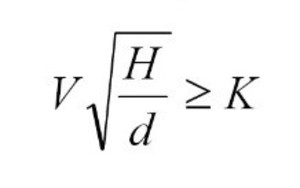 where:
where:
- V is the rate of discharge of waste water in m / s;
- H - filling the pipeline;
- D is the diameter of the sewage pipe;
- K is the slope coefficient.
In addition to calculations, to determine the level of the slope of the sewer pipe, you can already use known indicators, depending on the diameter of the pipe per 1 meter of its length. For pipes 5 cm in diameter, the upper edge of the pipe must be above the lowerthrough 1 meter by 3 cm. Sewage pipes with a diameter of 11 cm should be installed under a slope of at least 2 cm per meter length of the pipe. A pipe with a diameter of 16 cm should be mounted in such a way that the slope is not less than 0.8 cm.
What affects the slope angle of the sewer pipe
Gravity sewage is a standard solution that is used in private homes. In order to sewer pipes not clogged and served the maximum long term, it is necessary to set the slope of the drainage system correctly. Tilt angle of sewer pipes should not be too large, as this will affect its performance properties.
- The pipe can quickly fail, since it turns out that solid fractions will not be washed away due to the rapid flow. And this in turn can lead to the formation of silt inside the sewer pipe and posldejusche it cleansing.
- If the pipe is strongly inclined and at the same time long, the siphon lock can be broken, that is, the sewage system will be broken, and the whole unpleasant smell will rush into the house.
- When using metal pipes and the wrong angle of their inclination, when draining the upper part will be filled with air, which will promote the development of corrosion of the metal and the failure of the pipe.
Besides the listed negative factors, Exceeding the angle of inclination of the pipes will significantly increase the noise level with the drain of used water and the washout of faeces.
How to calculate the angle of the slope of pipes?
![]() The main parameter to be used for calculating the slope of the sewage pipe is travel speed flow of sewage. It is determined by the normative value (SNiP "Slope of gravity sewage"), the minimum flow rate is 0.7 m / s. You can only use the recommendations normative document,in which all the nuances for the sewage system are indicated. At the same time, SNiP reflects such moments as the installation of internal sewerage, storm sewage , and also points out that in calculating the angle of inclination one needs to orient one more indicator - level of pipe filling. The normative value of this indicator is at least 30%, but directly depends on the flow rate and on the material and on the diameter of the pipes.
The main parameter to be used for calculating the slope of the sewage pipe is travel speed flow of sewage. It is determined by the normative value (SNiP "Slope of gravity sewage"), the minimum flow rate is 0.7 m / s. You can only use the recommendations normative document,in which all the nuances for the sewage system are indicated. At the same time, SNiP reflects such moments as the installation of internal sewerage, storm sewage , and also points out that in calculating the angle of inclination one needs to orient one more indicator - level of pipe filling. The normative value of this indicator is at least 30%, but directly depends on the flow rate and on the material and on the diameter of the pipes.
In order that, after calculations, the sewage system is installed under the proper slope, it is necessary to make land works. Any unevenness at the bottom of the trench can lead to improper operation of the sewage system. Therefore, before laying and connecting pipes, you need to check the level slope of the trench.
Calculate the level of the slope of pipes, you can and not resorting to reading SNiPa, for example, use recommendations already calculated indicators for a particular pipe diameter. Well-known facts are as follows: for pipes with a diameter of not more than 50 mm, the slope for each running meter should be not more than 3 cm, but for sewage polypropylene pipes of large diameters , for example 110 mm - 2 cm per 1 meter length of the pipe.
How to measure the angle of the slope of pipes?
Internal wiring includes the laying of pipes inside the house, and each of the places of use of water have different pipe diameters, therefore, the angle of inclination inside the house can not be determined by only one value.
- For pipes that depart from shells, baths or showers, with a diameter of 40-50 mm, the slope of the sewage pipe should vary from a minimum of 2.5 cm per meter of length, up to 3.5 cm per running meter of the pipeline.
- When connecting the toilet bowl to the sewer pipe , with a diameter of 10 cm, its angle of inclination varies from 1.2 cm to 2 cm per 1 meter.
![]() In order to measure the necessary slope indoors, you can use different building levels- from laser, which can determine the correct direction, to small magnetic levels, which are installed on the pipe itself. They have 3 bands on each side, each of which is equal to 1 cm of slope.
In order to measure the necessary slope indoors, you can use different building levels- from laser, which can determine the correct direction, to small magnetic levels, which are installed on the pipe itself. They have 3 bands on each side, each of which is equal to 1 cm of slope.
When laying an external pipeline, it is necessary to take into account not only the calculated values of the slope, but also fillability of the pipeline. So, for houses of large number of storeys, respectively, and the number of people living in the house, and hence the number wastewater, there will be much more values given for private houses. In the construction of a house and the arrangement of sewerage, take into account, including the indicator of the filling capacity of the pipe, so that the sewage system in the house worked without interruptions.Therefore, the slope of sewer pipes in a multi-storey building for each project is determined separately, but guided by the SNiP.
In a private house, for sewerage, make calculations or use recommendations. The only thing to consider is the so-called non-standard situation. For example, depth of soil freezing or laying pipes below a predetermined level for other reasons, should help to increase the level of the slope of the sewage system. Since the main task in its arrangement is that the drains do not have to clog the pipe.And if the slope is too sharp or if it is unreasonably increased, all solid waste will accumulate inside the sewage system. This will inevitably lead to the formation of clogging and alteration. Measuring the level of slope outside the room can be using the same devices as at home.
Slope sewage and their methods of exposure
The use of various tools in the process of laying the sewer is a reasonable and correct decision. It is almost impossible to determine by eye acceptable level of slope,and in the process of installing pipes to make sure that it has not changed. Therefore, when sewerage is used various adaptations- a level, water or normal level and other devices.
For long sewage pipes (the total length of the entire line), you can do this: first, connect all the pipes in one, and then using a leveling device set the correct slope.But it's hard to cope alone. Since while one person adjusts the level of the slope of the pipe, the other must monitor behind the marks of the level and lead the process.
If you use the water level, it is better to choose one that has a round notch on its bottom, since it will be firmly hold onto the pipe, While you can adjust its position. It is especially convenient to use this level on metal pipes, because a magnet is built into its bottom, which will keep the level on the pipe.
Inside the house, the laying of sewer pipes is the easiest in terms of setting the required level, since you can use any tool To determine the angle of inclination (up to the usual ruler).
For the organization of a natural diversion of drains, it is very important to correctly calculate the slope of the sewage pipe. This will enable such a system to function for as long as possible without interruption, in particular, at home. Below we will consider what should be the slope of the sewage pipes, so that stagnations that require constant cleaning are not formed and complicate the process of operation of the system.
Organization of bias in a private home
Before you start replacing the sewer pipes, you need to study all the rules and recommendations for carrying out such work. All manipulation of design and construction must comply with the norms and rules of SNiP. They also contain information on the minimum slopes of sewer pipes, which are laid in both internal and external drainage systems.
It should be noted that making the maximum possible slope of the pipe in private houses is not recommended.
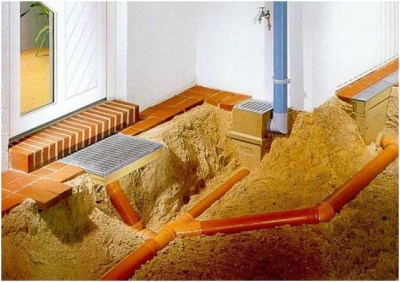
If the angle of the sewer pipe is too high, this will lead to a more rapid outflow of liquid, which entails the settling of solid particles on the walls inside the pipe. Thus, stagnation, siphon breaks and unpleasant odors will occur. Sometimes in apartments it can be difficult to create the right slopes for sewage pipes. There are times when any bias is not enough - you have to use a vertical gasket.
Determined with a bias when installing internal sewerage
Inside the house it is desirable to lay plastic pipes with a diameter of 50 and 110 mm. The first option is suitable for connecting all plumbing devices, except for the toilet.
It is worthwhile to bring a number of tips from professionals in the installation of internal sewerage:
- If the pipes go horizontally, it is not allowed to make turns at right angles. Taps should be equal to 45 degrees.
- In the case of vertical laying, straight angles are allowed.
- Where pipes rotate, it is advisable to install inspection connections to repair and control the sewage system.
- If the length of the pipe is small, then the slope can be made larger than the permissible standards.
The sources of plumbing include plumbing fixtures installed in the house or apartment - these can be toilets, sinks, baths. For a timely outflow of water, you need to choose the correct slope of the sewage pipe.
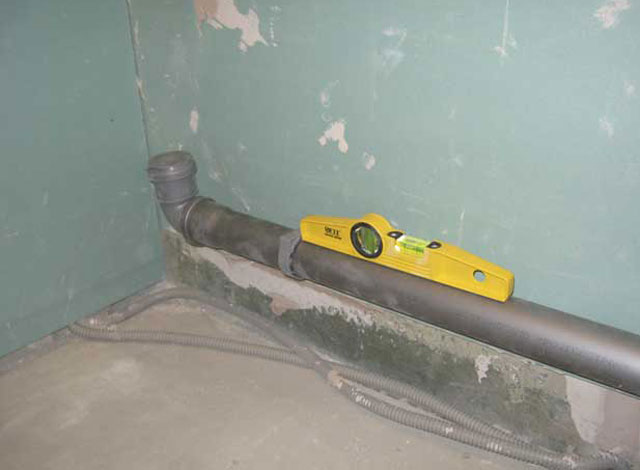
According to SNiP, the slope of sewer pipes is measured in centimeters, while the minimum value should not be less than 2 cm per meter of pipe (for details: ""). Also, within the plot, the types of wiring can not be changed, as the hydrodynamics of the pipeline will be disturbed, and this can provoke water hammering and pipe destruction.
In other words, each subsequent meter of pipe should be located 2 cm lower than the previous one. It should be noted that the slope can not be measured in degrees, because in this case there are various significant errors. As a result, there will be errors for any type of sewage system.
To make the calculation process for a private house easier, a more uniform formula is used.
Calculating the fullness of a pipe
To determine what should be the slope of the sewer pipe, both for cast iron, plastic, and asbestos-cement, their degree of fullness is calculated. This is necessary in order to prevent or minimize possible future clogging. Thanks to the received data it will be possible to calculate the slope of the pipes.
The calculation is carried out according to the following formula:
where H - fullness, B - height of the level of drains, D - cross-section of pipes.
Please note that the limit value of the fullness is 1, this will indicate that the pipe is completely filled, and the gradient is absent.
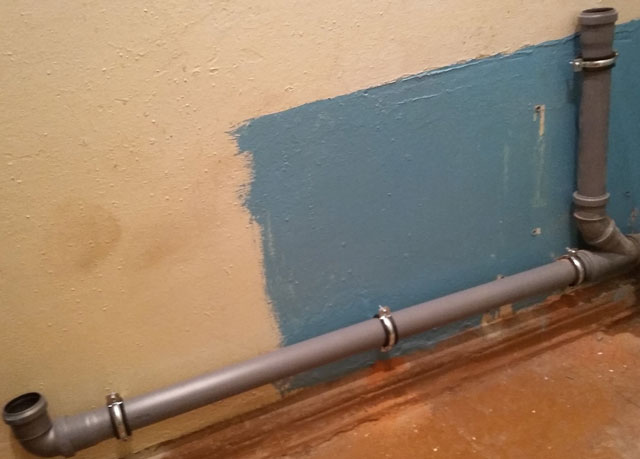
In percentage terms, it is better if the occupancy is within 50-60. In addition, it is worth taking into account the material of the manufacture of pipes and the angle of their inclination with respect to the septic tank. Pipes made of asbestos and cast iron are very quickly filled due to the high roughness of the surface of their inner walls.
In addition, this value will allow sewage to move at a speed of 0.7 m / s, so that it will be possible to keep the solid impurities in constant motion, preventing them from sticking to the pipe walls.
During the miscalculations, the task is to calculate the maximum possible rate of flow of sewage through the sewer pipes. In the same way, a minimum slope of the external sewage type is calculated. Since pipes with large cross sections are used for external sewage systems, the slope should also be made appropriate.
How to correctly determine the gradient
To find out how to properly make a slope sewer pipe, you need to know all about the length of the sewage system.

It is worth considering the example of determining the calculation of the slope of pipes, which are installed in a private house or apartment. Let's assume in our case the system will consist of pipes with a section of 10 cm, and their length will be 15 m. Then the slope is determined by the method of multiplying the length of the pipes by the slope, chosen from GOST or SNiPa.
The specific figures will be as follows: 15 m (length of pipes) × 0.02 (slope, according to specifications) = 0.3 m, i.e. 30 cm.
By the final figure, we can judge that the difference in height between the initial height and the finish is 30 centimeters.
Norms of slopes of pipes for sewer systems
The process, how to check the slope of the sewer, in part we have already considered. It should also be added that this value depends on the diameter of the pipes. In the corresponding table, you can find information on how this slope should be when a particular plumbing fixture is installed.
SNiP, in addition to determining the slope of the pipe, explains how the whole sewage system should be installed.

Allocate the following list of rules:
- The required bias is determined based on the section of the installed riser.
- If the cross-section of the riser does not exceed 11 cm, the angle is selected at 2 cm per meter.
- The minimum slope of pipes up to 5 cm in cross section is 3 cm per meter of pipe.
- If the cross-section of the pipe exceeds 16 cm, the slope will be 0.8 cm.
It should be noted that with a bias for sewer pipes, you need to decide when designing any structure.
Standards of deviations in the arrangement of the external type of sewerage
The system of external sewerage is designed for draining waste sewage from house to septic tank. As a rule, cast iron, asbestos-cement or PE corrugated tubes are used for such a system.
Since pipes for outdoor systems often have large cross-sections, they have separate rules for SNiP:
- When the pipe is crossed to 15 cm, the minimum slope values will be 0.8 cm for each meter of the pipeline.
- The maximum drainage values are 15 cm per 1 m.
- For main lines with a cross section of 20 cm, the slope is 0.7 cm for each linear meter of the pipe.
The most acceptable for the house will be a gravity system, the slope in which is formed in the excavated trenches throughout the pipeline installation route. It should be noted that the pipes of the external sink system should be located below the freezing level of the soil. In addition, it is worth remembering the laying of any type of insulation.

With a maximum slope of 0.15 (i.e., a 15 cm difference), the system will be very inefficient, siltation and blockage will occur due to the rapid movement of water.
In any case, the slope of the pipe and other sewer pipes in the drainage system will be determined by the maximum permitted values. The optimal value, as a rule, will be that which is between the minimum and maximum values. The maximum possible values for outdoor sewerage are allowed only in the case of tapping of water, if there is no risk of clogging of pipes.
Thus, to determine what should be the deviation of sewage pipes, it is necessary at the design stage. If such a system is organized correctly, then it will serve as long as possible without interruption and with maximum efficiency.
For the slope of external and internal sewage pipes in a private house, as well as for laying the sewer in the apartment, exact standards have already been calculated and the corresponding recommendations of SNiPs have been submitted. However, very often for correct outflow it is necessary to calculate the optimum level of slope, based on individual parameters, type of room, material and pipe diameter.
Consider the SNiPs, recommendations and calculation formulas, which slope should be at the sewage pipe for a length of 1 meter in different cases - in an apartment, private house, internal and external network and depending on the material of the sewage pipes.
For proper operation of the sewer system, it is extremely important to make accurate calculations. What are fraught with errors?
- Too much slope will lead to an accelerated outflow, which will be accompanied by strong noise. At the same time, the internal surface is quickly erased and self-cleaning is slowed down.
- Insufficient level threatens clogging of the system, especially if it does not provide a fecal household pump. The site of the plugging of the pipeline is difficult to diagnose and it takes a long time to repair.
It is best when the movement of effluents occurs at a velocity of 0.7 -1 m / s. AT The calculation process must necessarily take into account the diameter, material and fullness (hydraulic pressure) of the pipes.
SNiP
When designing sewers, it is customary to follow not the formulas, but the values given in the SNiP. Installation inside the building is regulated by the requirements of section 2.04.01-85, and the outer gasket - section 2.04.04-85.
Different calculation methods are needed for multi-storey buildings and large residential complexes.
All figures are given in the form of coefficients and are measured in centimeters per meter of linear. The designation in degrees is not used because of large errors in the process of installation to a septic tank or sewage pit, which are located at a distance of 10-12 meters from the house. Thus, for a diameter of 40-50 mm and a septic remoteness of 12 m, a coefficient of 0.03 (3 cm / pm) is applied, and for a section of 85-100 mm it is 0.02.
Minimum allowable slope for external and internal sewage lines according to SNiPu is 0.015, with a slope of sewer pipes with an angle less than the minimum, solid particles remain in the pipe. In small areas - no more than 1 m, a coefficient of 0.01 is allowed.
Maximum grade external and internal sewerage according to the norms does not exceed 3% and generally depends on the flow rate, in plastic sewer pipes the speed should be maintained to 1.4 m / s, otherwise the flow will be divided by fractions, and the solid particles will remain in the system.
Calculation for an apartment
For sinks, sinks, washbasins and bathrooms, pipes of diameters of 40-50 mm with a slope of 2.5 cm to 3.5 cm per meter are selected. To drain the waste water from the toilet bowl, the line diameter is 100 mm. The minimum value per meter is 0,012, and the norm is 0.02. When installing, a bubble or laser level is used.

Separately, the complex Callbrook-White formula can be applied. It looks like this:

Sewerage in multi-storey buildings is located vertically. The drains move along the diameter of the walls, and in the center of the flow - compressed air. In this flow, there is almost no clogging.
Calculation for a private house
With small amounts of runoff, calculations are not necessary. The main thing is that the slope should not be less than the minimum allowed by the norms of SNiP.
 It is important to slope and cross-section of the sewerage contributed to the filling of the pipeline by at least a third of the diameter.
It is important to slope and cross-section of the sewerage contributed to the filling of the pipeline by at least a third of the diameter.
To increase the maintainability and service life, it is recommended to use pipes of the same material.
Usually, preference is given to sockets mounted against the flow in the line. If necessary, change the direction of flow, it is desirable to avoid sharp turns.
So, instead of a 90-o fitting, it is advisable to use 2 to 45 o.
When forced external sewerage all plumbing is below the level of the septic tank. The calculation of angles along the entire length of the pipeline becomes irrelevant. It is only necessary that the impurities are led by a single stream to a single collector, and then pumped out. What pipes are used for outdoor sewerage learn from this.
The second option - installation in the system after each sanitary device. How to properly carry out sewerage in a private house, we will tell in this.
Optimum values for the outdoor system
When laying the external sewage system, the point of withdrawal of the pipeline from the wall or foundation is taken as a basis. The rule is observed: the smaller the cross-section, the greater the slope. For a normal outflow with a diameter of 110, there is 0.02, and for pipes 60-80 mm, 0.03 or more is needed.
 It is necessary to take into account 3 main factors:
It is necessary to take into account 3 main factors:
- Relief. Draining wells are usually located at the lowest point of the plot, so a natural slope of the trench is added.
- Depth of the pipeline near the septic tank should not be lower than the inlet in sewage well.
The slope should be rational so that you do not have to dig in the drain pool too deep - this is both expensive and dangerous to get into the groundwater septic tank.
- Trenchshould be deeper than the freezing level of the soil.
Rules for the installation of internal pipelines
When stacking, where all points are reduced to one riser, the drainage volume is calculated in total for all appliances, connected to the highway. It is necessary to calculate the unevenness of the floor so that the slope and the height difference between the plumbing and the drain are consistent with the norms of SNiP.
In the process of designing and laying you need to pay attention to a few more points: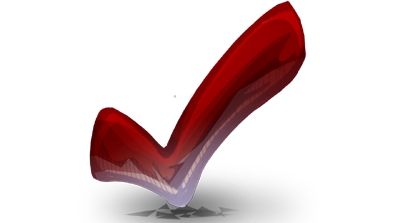
- Natural shrinkage. Ground can be compacted under the influence of external factors, as a result of which the slope changes.
- In some areas it is desirable to put inspection hatches with a step of 30-40 cm in case of blockage with a bad outflow. With the same purpose, specialists connect the pipes at an angle of at least 120 °.
- Calculations are carried out, starting from the outlet of the sewerage, but installation always takes place in the reverse order - in the direction from the drainage well.
- The project is drawn up so that the length of the line is minimal. The shorter the trunk, the less likely to clog or break.
Proper location of sewage sludge prevents clogging and ensures a long service life of all communications.
Optimum variant of calculations - orientation on norms of SNiP and the account of individual features of a building and an arrangement of bathrooms. When the installation is completed before the trench is buried, all elements of the pipeline are checked for leaks and reliability of the outflow.
For the drain system, pipes can not be installed in any order. A slight slope of the sewage structure will lead to clogging. If the slope is large, there will be leaks and noise will occur.
The slope of the pipe depends on its length, the longer it is, the greater the slopeWalls sewage networks overgrown with layers over time, as waste water contains garbage and remains of food.
The optimum angle is displayed in centimeters. There are special regulations and calculations are made to determine it.
How to calculate the grade correctly
Minimum the angle of inclination depends on the diameter of the pipes. The following values are accepted by snapshot norms:
- With a diameter of 50 mm, the value is 0.03.
- For elements with a cross-section from 85 to 100, this indicator is 0.02.
This value indicates the ratio of the height of the slide to the length of the system.
When creating a project, it is important to take into account the turns and connections of the main line, as well as the points of discharge of effluents.
For sanitary equipment, there are standards when creating bends:
- for a washstand, articles with a diameter of 40 to 50 mm are selected, and the minimum slope of the sewage system is 0.25;
- for WCs, this value is 0.12 - 0.02.
When installing external systems, calculations are made. For this, a pipeline of a larger diameter is used than when installing indoor communications.
The following rules apply:
- For pipes with a diameter of 150, a slope of 0.08 is selected.
- When using structures with a cross section of 200 mm, the slope is taken to be 0.07-0.05.
There are limitations on the possible value. For the outdoor circuit, the figure is 0.15. The slope of the sewage system by 1 meter is 15 cm.
Gradual reduction is performed so that the solids in the system are in a suspended state. This prevents the adhesion to the surface of the walls of the structures.
In short areas, from the sink to the bathroom, it is not so important to consider the gradient.
To determine the desired reduction, the level is used, since not all floors are distinguished by an even surface.
If you can not make the right slope. Then the maximum allowable reduction level is selected. The pipe 150 has a value of 0.07. For lines in 200 mm - 0,05.
In multi-unit buildings, the structures are stacked evenly. At the same time, an uninterrupted flow of runoff occurs. If the bias is broken, then the branch curves and clogs occur.
The optimal slope of the sewage system per 1 meter contributes to a speed of 0.7-1 meters per second. At the same time, solids do not settle on wall surfaces, but are in a suspended state.
Internal pipeline slope
The gradual decrease and the value of the snip of the pipe depends on the specific section. In the bathroom and in the kitchen are used various highways. Water supply and sewerage is performed taking into account certain parameters.
When installing the toilet, trunks with a section of 100 mm are used, while the reduction varies from 0.012 to 0.02.
For washbasins, a bathroom and a sink in the kitchen, products in 50 or 40 mm are selected. In this case, the normal angle of the pipe is 0.035-0.025.
A bubble level is used for accurate calculation. If you choose right away the right tool In the future, you do not have to remodel the sewer system.
When installing the internal sewer the following recommendations apply:
- Do not apply turns at right angles. Bends at an angle of 45 degrees are recommended.
- If the elements are arranged vertically, then straight angles are used.
- When turning the structure, special connections are made to control the structure.
If the pipes are of small length, then the slope in percentages is more than necessary.
It is forbidden to make changes to snippets. This will lead to violations of hydrodynamic characteristics. In this case, water hammering will occur. In some cases, a countercrack is performed.
Sewer construction is a gravity system. For its normal operation, it is necessary to determine the slope. This means that the mains are not laid horizontally, but with a slope, so that the liquid drains naturally.
It is necessary to correctly calculate the bias. This value is approximately two cm per one linear meter of the main line. This means that each meter of the contour is lower than the previous one by two centimeters. All the values for snippets are determined at the design stage.
The corner of the highway is measured in centimeters. This is not done in degrees to eliminate errors during installation work. Such shortages lead to congestion and traffic jams, which will require cleaning of the structure.
Standards for sewage pipes
And the sewage system contains standard dimensions for the installation of the system. The diameter of the outer mains is greater than the internal structures.
For an element with a diameter of 150 mm, the slope will be required at 0.008. For a larger cross section, this value is reduced.
With a large slope, the liquid will not clean the walls of solid impurities and the clearance will narrow over time.
Dimensions plastic elements for sewerage depend on the application: internal or external sewerage.
SEE VIDEO
Outside products will have more wall thickness. There are the following standard pipes:
- Pipes made of polypropylene have the following standard section sizes: 50, 40 or 110.
- Products made of high-density polyethylene are made wound in coils. They are non-pressure and pressure. Their diameters are 50, 90 or 110.
- The highways from polyvinylchloride are in a section from 10 to 315 mm.
Pipes for sewerage are resistant to the influence of an aggressive environment. Quality products are smooth, which prevents the formation of blockages. Pipes are laid in industrial and household soils. Pipes are characterized by low thermal conductivity, which prevents freezing.

